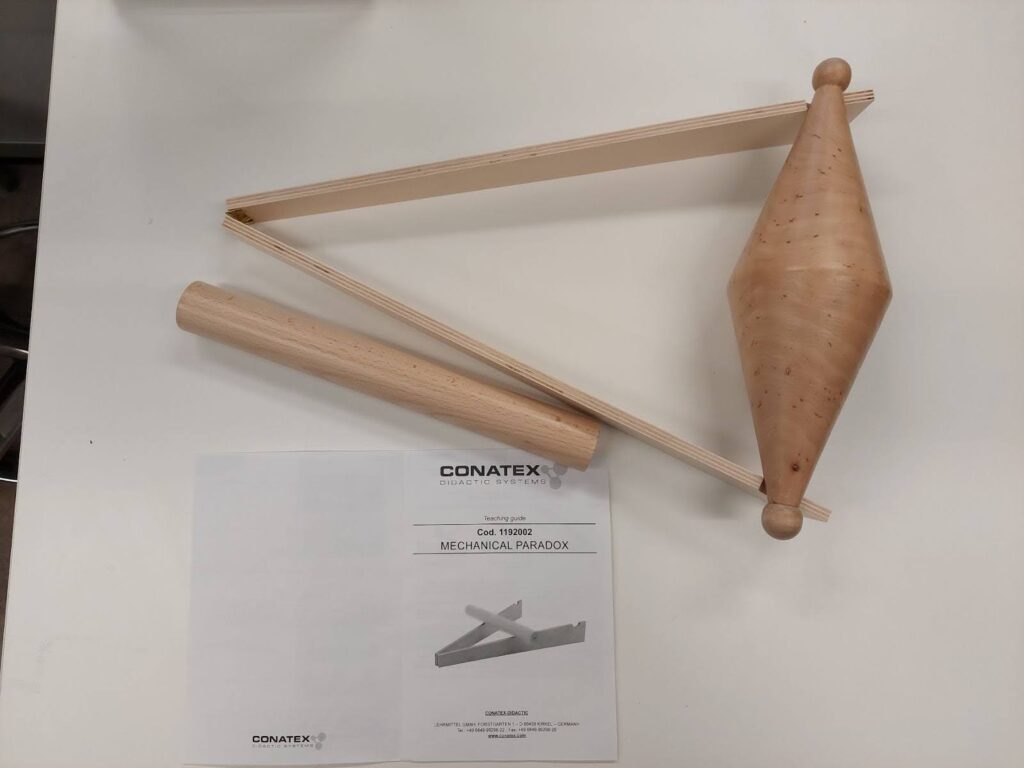1J20.70 - Rolling uphill [double cone]
- Description
This demonstration utilizes a double cone on a specifically designed ramp to illustrate the importance of the center of mass in determining the rolling direction. The track’s geometry creates an incline, but the double cone’s wider section reaches under the top of the rails as it rolls. Hence, lowering its center of mass despite the ramp’s slope and minimizing the system’s gravitational potential energy.
If the angle between the two parts of the hinged ramp is too small, the double cone also appears to roll downhill and not “uphill”, so make sure the angle is correct. This also indicates that there is a range of angles in which the double cone will (almost) not move. Practice before demonstrating.
- Equipment
- Wooden double cone
- Wooden cylinder
- Wooden hinged ramp
- How to assemble and operate
- 1. Cylinder: Place the cylinder at the top of the ramp and let it go. It should roll down, as expected.
- 2. Double cone: Set on a level underground and assure that the angle between the two parts of the hinged ramp is approximately correct: it should comfortably accommodate the width of the double cone (see photographs). Then place the cone in the lower part of the ramp and observe what happens. The double cone should roll uphill.
